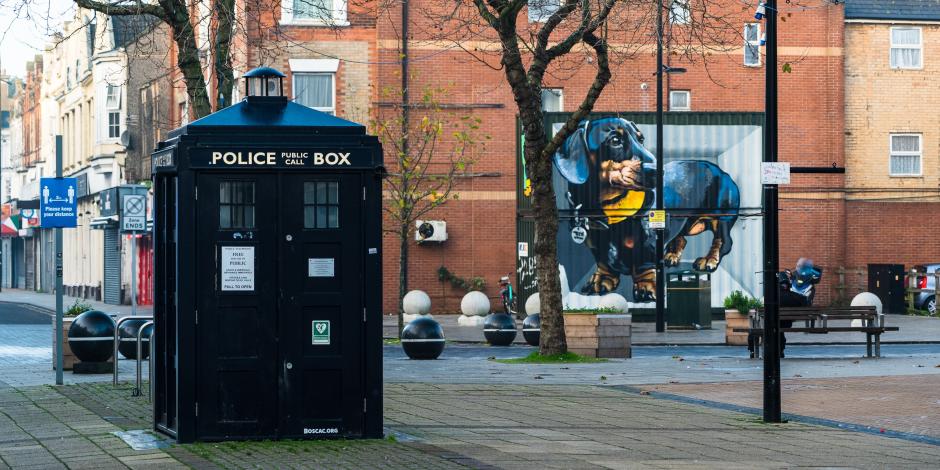The unsungunbesungenunsung heroineHeldinheroine of British electronic music.” This is how many in the music industry describe Delia Derbyshire, who died 20 years ago. She worked with famous musicians, world-class composers and pop stars. Her biggest success, however, was the music she arranged for the TV series Doctor Who. Its high, echoing sound is known to generations of British TV audiences.
Derbyshire was born in Coventry in 1937. Growing up during the Second World War, she became fascinated by the sound of air-raid sirenFliegeralarm, Luftschutzsireneair-raid sirens, and this led to an interest in the theory of sound and acoustics. As the topic was not on her school curriculum, Derbyshire taught herself. She later studied maths and music at Cambridge University, focusing on Bach, Beethoven and Mozart.
Derbyshire was a talented musician, but when she applied to work as a studio manager at the Decca record label in 1959, she didn’t get the job because she was a woman. In 1960, she began working as a trainee assistant studio manager with the BBC and soon moved to the BBC Radiophonic Workshop, where she created music for television shows.
In 1963, the Workshop was asked to come up with the theme musicTitelmusiktheme music for a new science-fiction TV programme about a time-travelling Time Lord. In a later interview for the BBC, she was asked about the music for Doctor Who. “The most remarkable thing about it is that nobody actually played it,” she said. “The music was constructed note by note without the use of any live instrumentalists at all.”
The Australian composer Ron Grainer created a tuneMelodietune and Derbyshire arranged the music electronically without instruments or computers. Her team recorded electrical beepPiepstonbeeps on to a tape by to adjustanpassenadjusting the pitchTonlagepitch of notes and to splice sth.etw. verbindensplicing them together to create individual lines and melodies. Mysterious, innovative and alien-sounding, it was perfect for Doctor Who – and the fans loved it.
As she was only an assistant, Derbyshire was not to creditanerkennencredited for her work on the composition. The success of the show did, however, bring electronic music to a wider audience and established its reputationRufreputation.
Derbyshire would use anything that came to hand to create sounds. So, for a programme about the Tuareg people of the Sahara in the late 1960s, she used a metal lampshadeLampenschirmlampshade. “It had a beautiful ringing sound to it,” she remembered later. She combined her own voice with the sound of the lampshade being struck. “So the camels rode off into the sunset with my voice in their hoof (pl. hooves)Hufhooves and a green lampshade on their backs,” she said.
In 1973, Derbyshire left the BBC and joined an electronic music studio, but grew tired of the creative pressure and left the music business entirelyvollkommen, völligentirely in 1975. She took on different jobs, working as a radio operator for a British Gas pipeline project, in an art gallery and in a bookshop. Although she had worked with musicians, including Brian Jones, Harry Nilsson, Paul McCartney, Karlheinz Stockhausen and Ringo Starr, Derbyshire was mostly forgotten in later life.
In the 1990s, British bands such as Sonic Boom, the Chemical Brothers and Blur referenced her work. Paul Hartnoll of the band Orbital called the Doctor Who theme “the single most important piece of electronic music”.
Derbyshire brieflykurzzeitigbriefly returned to creating electronic music in 2001, but she had suffered from chronic alcoholism for many years and died of renal failureNierenversagenrenal failure that same year, at the age of 64.
Neugierig auf mehr?
Dann nutzen Sie die Möglichkeit und stellen Sie sich Ihr optimales Abo ganz nach Ihren Wünschen zusammen.



